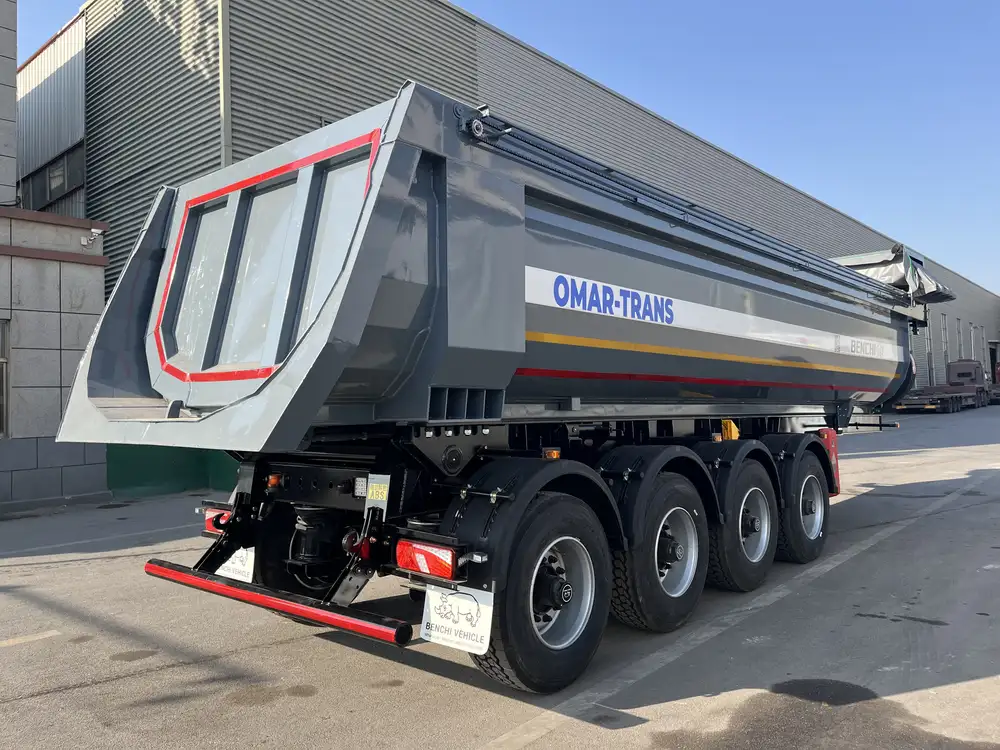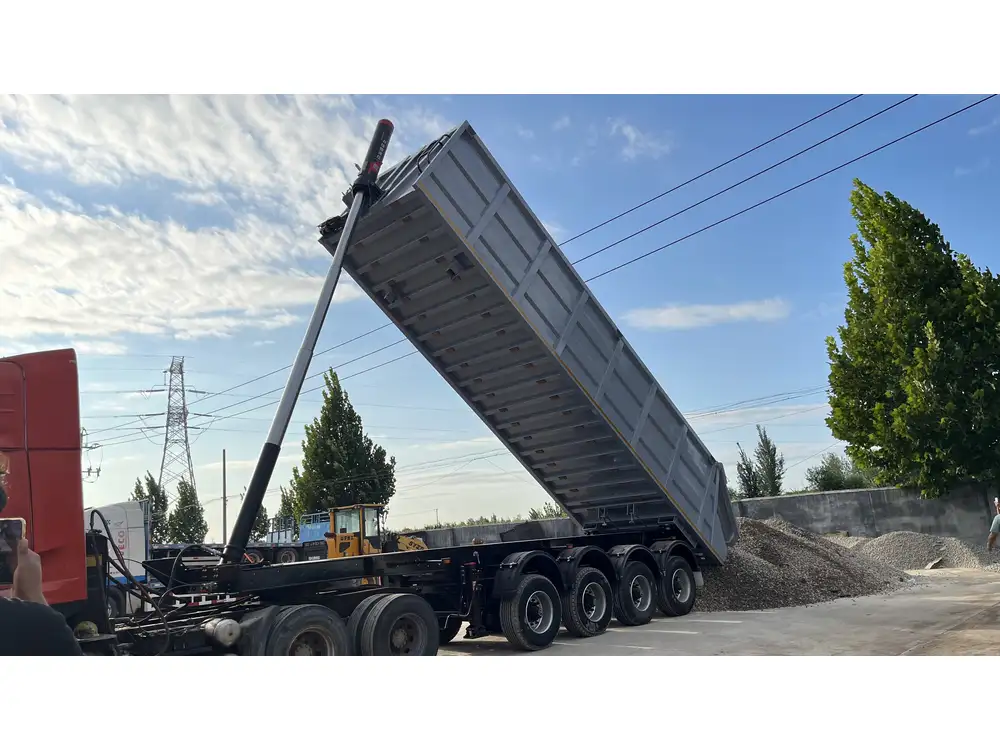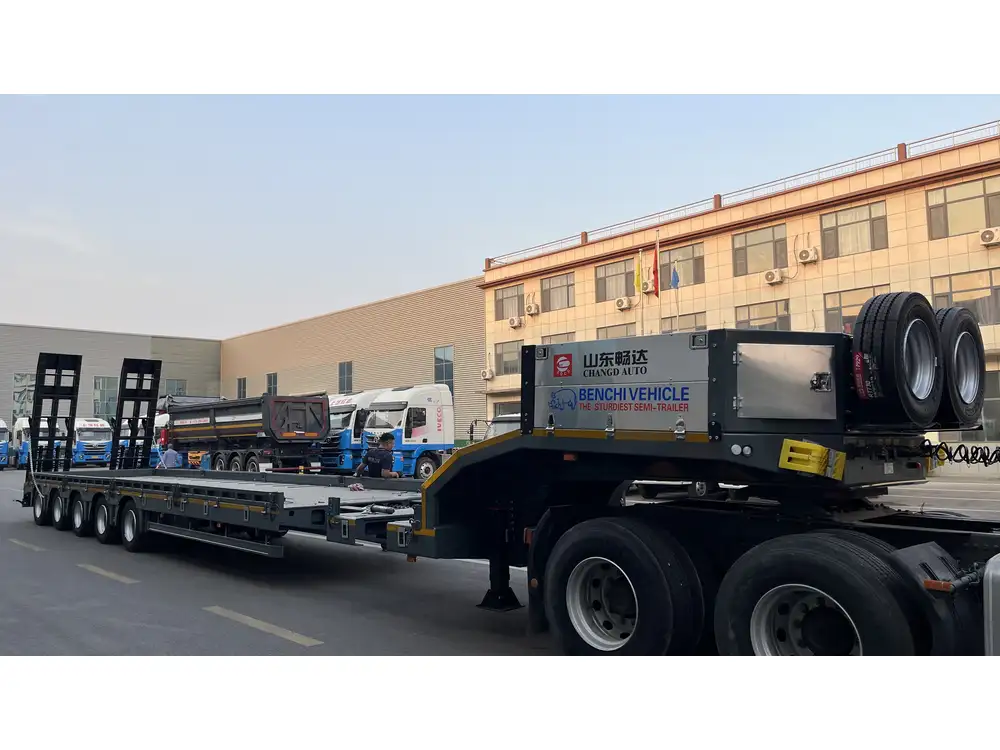Purchasing a semi-trailer is no small feat—it’s a significant investment that requires careful thought and consideration. This in-depth guide is designed to equip you with the knowledge and insights necessary to navigate this important decision. Whether you’re running a busy logistics company, a budding freight business, or simply seeking to expand your transportation capabilities, this guide will elucidate the multifaceted aspects of buying a semi-trailer.
Understanding Semi-Trailers: The Foundation of Your Purchase
What is a Semi-Trailer?
A semi-trailer is a trailer that does not have a front axle. It is designed to be towed by a truck or tractor, which carries most of the trailer’s weight through a coupling or hitch. A semi-trailer is integral to the freight transport industry, utilizing its capacity to haul goods of various sizes and weights.

Types of Semi-Trailers
Semi-trailers come in various shapes and sizes, and each type serves a specific purpose. Below is a comparative overview of popular semi-trailer types:
| Type | Key Features | Ideal Use Cases |
|---|---|---|
| Flatbed | Open platform, versatile loading, easy access from all sides | Construction materials, large machinery |
| Reefer/Retail | Insulated for temperature control, can carry perishable goods | Food and pharmaceutical transport |
| Dry Van | Enclosed, weather-resistant, secure cargo | General freight, retail goods |
| Tanker | Designed for liquids, often cylindrical | Fuel, chemicals, food liquids |
| Container Chassis | Designed to carry shipping containers | Intermodal transport |
Understanding these variations is essential, as it allows you to make an informed choice based on your specific cargo needs.
Assessing Your Needs: Key Considerations
Load Capacity and Weight Ratings
Before finalizing a purchase, calculate your average load requirements. Each semi-trailer has a maximum load capacity, typically defined by its Gross Vehicle Weight Rating (GVWR).
Considerations:
- Typical Load Weight: Ensure the semi-trailer can handle your average load.
- Overload Penalties: Be aware of regulations that pertain to load limits and develop a safety buffer to avoid fines.

Dimensions and Configuration
It’s vital to consider the dimensions of the semi-trailer you’ll need. This includes not only the overall length, width, and height but also the configuration of the trailer itself.
Spacing Factors:
- Loading Docks: Ensure the trailer fits into standard loading dock configurations.
- Road Regulations: Check state and federal laws for maximum allowable dimensions.
Intended Use and Terrain Challenges
What you intend to transport will largely dictate your choice of semi-trailer. Additionally, the terrain your vehicle will cover can significantly impact the durability and suitability of a trailer.
Examples:
- Urban vs. Rural: Consider whether you’ll mainly be navigating city streets or rural highways.
- Seasonal Weather: Opt for robust designs if you frequently encounter harsh weather.
Budgeting for Your Semi-Trailer

Purchase Options: New vs. Used
When considering how to buy a semi-trailer, it’s important to weigh the pros and cons of purchasing new versus used equipment.
| Category | New Semi-Trailer | Used Semi-Trailer |
|---|---|---|
| Cost | Higher initial investment but includes warranties | Lower price point with potential hidden costs |
| Condition | Typically comes defect-free and ready to work | Variable; condition needs careful assessment |
| Depreciation | Rapid initial depreciation | Slower depreciation rates |
| Customization | Full range of options for customization | Limited customization based on existing features |
Financing Options
Depending on your financial situation, you may consider various financing methods to acquire a semi-trailer. Options may include leasing, outright purchase, or loan financing.
Common Financing Methods:
- Bank Financing: Traditional loans with fixed or variable interest rates.
- In-House Financing: Some manufacturers and dealerships offer financing as part of the sale.
- Leasing Arrangements: Short-term options that allow for flexibility.
Research and Selecting a Manufacturer or Dealer

Manufacturer Reputation
The selection of an experienced and reputable manufacturer or dealer is crucial to ensuring your purchase is sound.
Key Aspects to Research:
- Years in Business: A long-standing history usually reflects reliability.
- Warranty and Support: Analyze the aftermarket support they offer.
- Customer Reviews and Testimonials: Consult online ratings and feedback from previous buyers.
Evaluating Purchase Locations
Choosing the right place to purchase your semi-trailer can significantly affect your buying experience and satisfaction.
Types of Purchase Locations:
- Dealerships: Offer a range of options, including new and used semi-trailers, along with service support.
- Auctions: Can yield cost-effective options but come with risks; thorough inspection of the trailer is imperative.
- Private Sellers: May reduce costs further, but due diligence regarding condition and history is essential.
Conducting Due Diligence

Inspection Checklist Before Purchase
For both new and used semi-trailers, conducting a thorough inspection is paramount.
Key Areas to Inspect:
- Chassis and Frame: Look for rust, cracks, or any structural damage.
- Suspension and Axles: Ensures that weight distribution is even.
- Brakes and Tires: Examine for wear; they are critical for safety.
- Interior Condition: Particularly for enclosed trailers, check insulation and securing points.
Test Driving (if applicable)
If possible, perform a test run. This is especially useful for used semi-trailers where performance can vary significantly.
Making the Purchase: Final Considerations

Negotiating the Price
When negotiating the price of a semi-trailer, be well-prepared.
Tips for Effective Negotiation:
- Research Local Market Prices: Provides a solid basis for negotiations.
- Be Open to Bundling: Consider negotiating in bundles, such as obtaining additional necessary equipment.
- Know Your Walk-Away Point: Set a maximum budget to avoid overspending.
Financing Finalization and Paperwork
Once a deal is struck, ensure all financial arrangements and paperwork are handled correctly.
Critical Paperwork Includes:
- Purchase Order: Confirm all agreed terms, including price and any additional services.
- Insurance Documentation: Obligatory for covering the trailer against damage and liabilities.
- Registration and Licensing: Essential for compliance with local transportation laws.
After the Purchase: Maintenance and Care

Routine Maintenance Tips
Regular maintenance is vital to prolonging the life of your semi-trailer and ensuring that it operates effectively.
| Maintenance Item | Frequency | Importance |
|---|---|---|
| Tire Inspections | Monthly | To prevent blowouts and ensure safety |
| Brake Checks | Every 10,000 miles or annually | Critical for safety and legal compliance |
| Lubrication | Following the manufacturer’s guidelines | To ensure moving parts function smoothly |
| Structural Inspections | Semi-Annually | For detecting wear and tear or damage |
Understanding Warranty and Support Services
Lastly, familiarize yourself with the warranty coverage and support services offered by the manufacturer. Knowing who to contact for repairs or service can save time and money in the long run.
Conclusion
Navigating the process of buying a semi-trailer doesn’t have to be overwhelming. By understanding your needs, evaluating your options diligently, and conducting thorough inspections, you can make a sound investment that propels your transportation capabilities into the future. Education is key; equipping yourself with knowledge paves the way for smarter decisions that can significantly impact your productivity and efficiency in the fast-paced logistics landscape.
The aforementioned strategies, tips, and insights encapsulated in this guide serve as a comprehensive foundation for your semi-trailer purchase journey, ensuring you are well-prepared to face the challenges and seize the opportunities that lie ahead.



